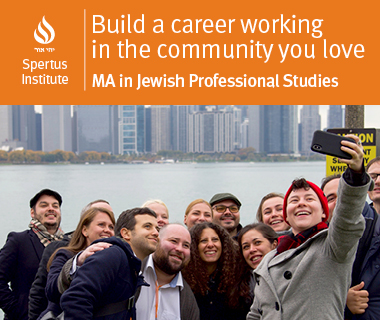My eye-opening exhibit
Permanent link All PostsJoseph G. was just a couple of years old when his family was forced to march to a ravine close to his home in Kyiv, Ukraine. There, Nazi soldiers shot almost the entire Jewish community of Kyiv. Few were able to hide under the piles of bodies and make it to tell the story.
Joseph survived. But his story is even more miraculous because at a time when few were willing to help their Jewish neighbors, a woman decided to act to save at least one person. She pulled Joseph out of a crowd being herded to Babi Yar. The Ukrainian woman was the neighborhood’s street sweeper and hid Joseph throughout World War II and then raised him as her own. No one else from his family survived those harrowing years.

Joseph was among a group of 15 Russian-speaking seniors who visited the Illinois Holocaust Museum and Education Center last week. The seniors are part of the Russian Senior Center at the Dina & Eli Field EZRA Multi-Service Center. Run by two Russian-speaking social workers, the program helps Russian-speaking seniors with filling out paperwork, English-language classes and cultural program, among its many offerings.
For this field trip, I had the privilege of serving as a translator.
I hadn’t been to the museum since it opened. The exhibits cover everything from Jewish life in pre-war Europe to Nazi massacres to the attempts at normalcy in the ghettoes to liberation and life post-war. It’s a hard path to walk, but one that made me keenly aware of all the benefits of living in a free society where my being Jewish – or a woman or Russian or any other way I identify – has no bearing on opportunities afforded to me.
Joseph was particularly agitated when we entered the Museum. He had donated an item to the collection: the medal recognizing his savior as a Righteous Gentile. In fact, a tree has been planted in her honor at Yad Vashem, Israel’s Holocaust museum and the national memorial to victims of the Shoah.
I translated the placards, the sound recordings, the videos and photo captions as we walked through the winding rooms, passing from the dark, angular half into the light half of the Stanley Tigerman-designed Museum.
As we went, the group recalled their own experiences. Like Joseph, many lived in large Jewish communities. Three women remembered living in small towns in present-day Belarus and mourned the lives of their relatives who perished. Another woman was a communications operator for an infantry division. Still others fought with the partisans and only recently discovered information about Jewish partisans in the very same forests – like the Bielski brothers, whose stories were recently made into a film.
Joseph didn’t see his artifact in the collection, but was relieved to find out that it’s carefully catalogued and might be on display when the exhibits change in about six to nine months. He’ll get a postcard from the Museum when the medal is on view.
The visit was much more than a very welcome chance to practice my Russian and my simultaneous translation skills. The two narratives – of the group I was accompanying and of the exhibits themselves – converged into a much fuller, richer story.



.jpg)



